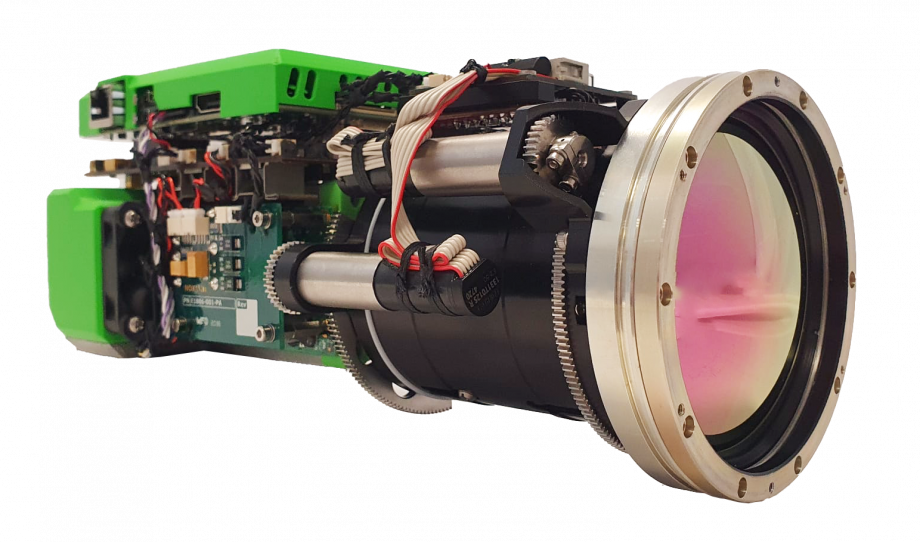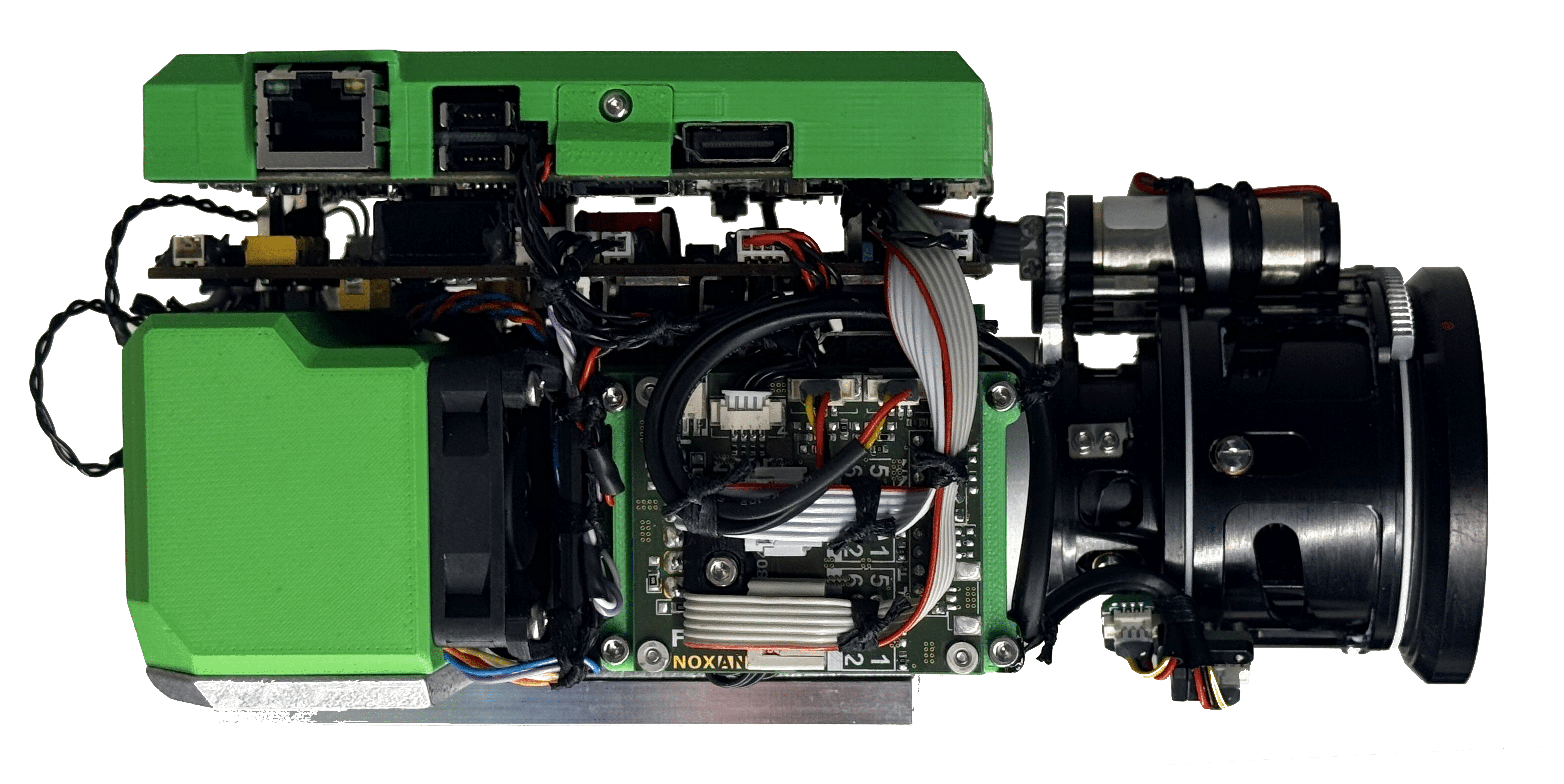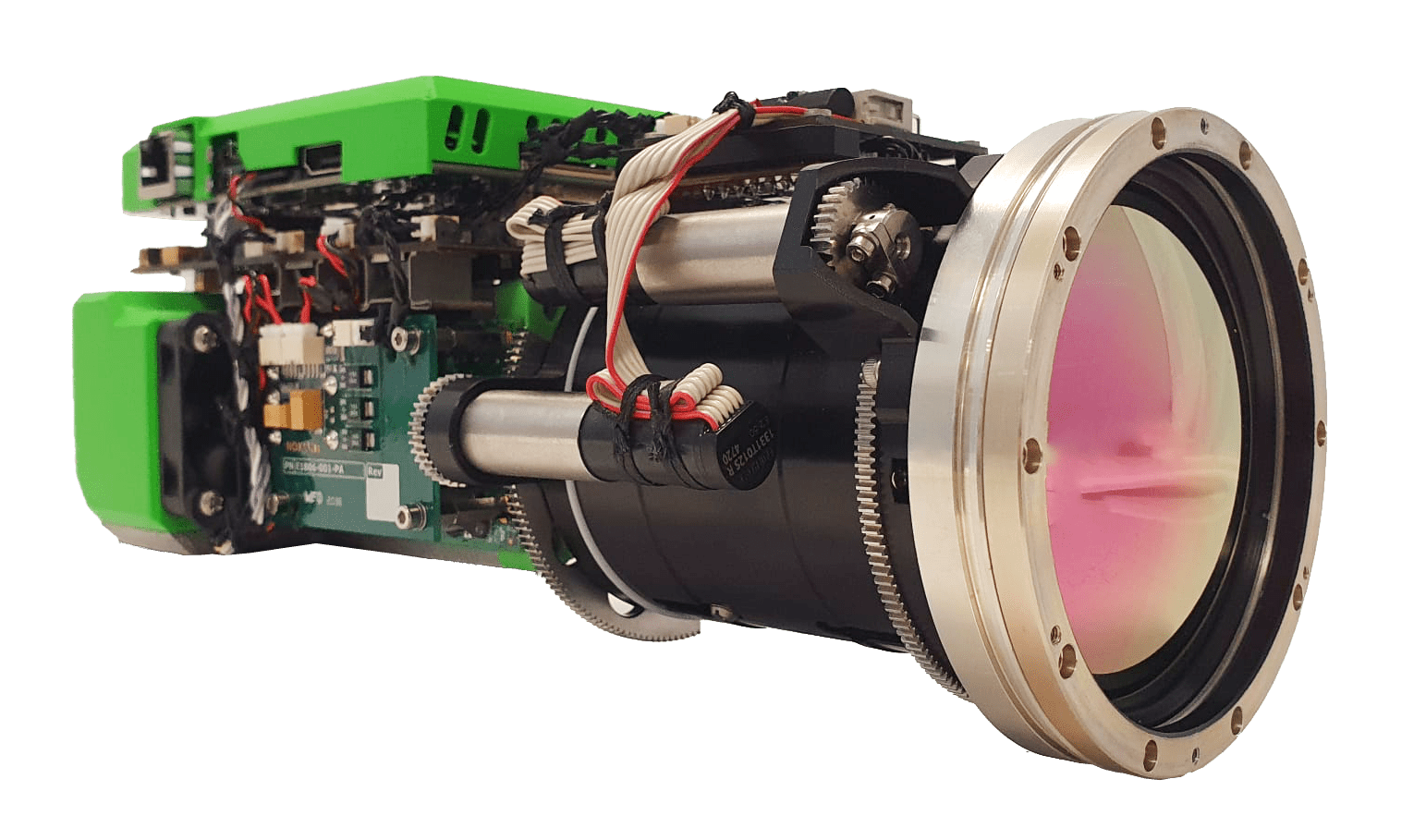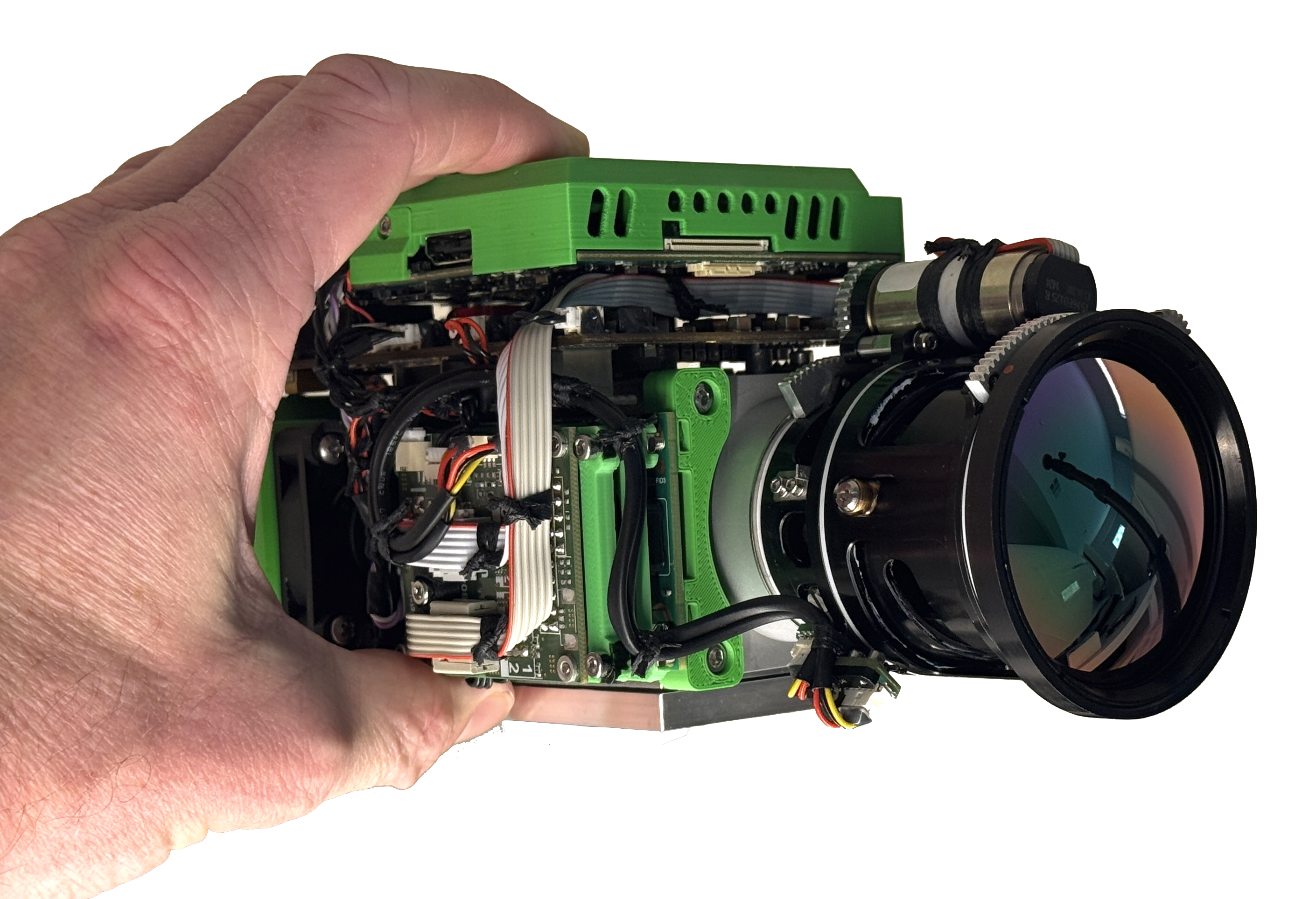Compact High Performance MWIR Thermal Camera Cores for Integration
Why choose MWIR for long-range surveillance applications?
MWIR (Mid-Wave Infrared) is often considered superior for long-range surveillance imaging due to several key advantages:
- Optimal Atmospheric Transmission: MWIR operates in the 3-5µm wavelength range, which coincides with an atmospheric transmission window that allows infrared radiation to pass through the atmosphere with minimal absorption. This makes MWIR ideal for long-range imaging, as it can detect objects at greater distances without significant signal degradation caused by moisture, dust, or air turbulence.
- Higher Contrast in Varied Conditions: Compared to LWIR (Long-Wave Infrared), MWIR sensors provide better image contrast in diverse environmental conditions, such as hot or cold weather. MWIR excels at detecting objects with varying temperature differences, making it effective for surveillance in challenging environments, such as urban areas, deserts, or maritime conditions, where temperatures can fluctuate dramatically.
- Sharper Image Quality: MWIR camera cores typically offer sharper, higher-resolution images compared to LWIR, particularly in outdoor environments with high heat sources like vehicles or industrial equipment. This makes them ideal for identifying and tracking targets from long distances with great detail, even in complex scenes.
- Improved Detection of Hot Targets: MWIR is better suited for detecting high-temperature objects like vehicle engines, exhaust systems, or aircraft, which emit strongly in the 3-5µm spectrum. This makes MWIR especially valuable for military, border, and perimeter surveillance applications where the detection of warm objects at long range is critical.
See also, NOXCAM
To view the manufacturer’s website, click here.









